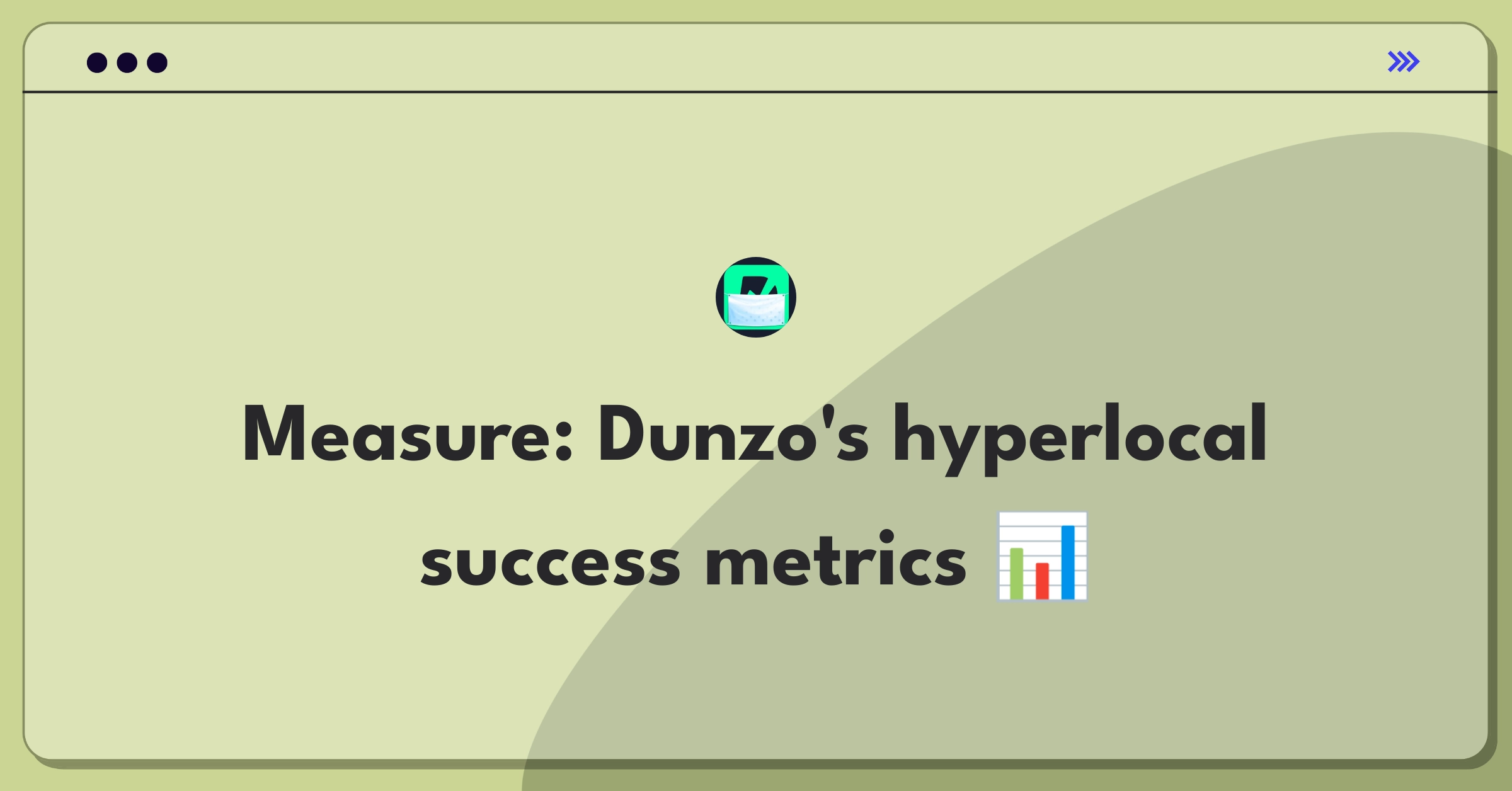Introduction
Evaluating Dunzo's hyperlocal delivery platform requires a comprehensive approach to product success metrics. To address this challenge effectively, I'll follow a structured framework that covers core metrics, supporting indicators, and risk factors while considering all key stakeholders. This approach will help us gain a holistic view of the platform's performance and identify areas for improvement.
Framework Overview
I'll follow a simple success metrics framework covering product context, success metrics hierarchy, and strategic initiatives.
Step 1
Product Context
Dunzo is a hyperlocal delivery platform that connects users with local businesses and delivery partners to facilitate quick, on-demand delivery of various goods and services. The platform operates in multiple Indian cities, offering services like grocery delivery, food delivery, and package pickup and drop.
Key stakeholders include:
- Users: Seeking convenient, fast delivery of goods and services
- Local businesses: Looking to expand their customer base and increase sales
- Delivery partners: Seeking flexible income opportunities
- Dunzo: Aiming to grow its user base, increase order volume, and achieve profitability
User flow:
- User opens the app and selects a service (e.g., grocery delivery)
- User browses items or stores, adds products to cart
- User confirms order and payment
- Nearby delivery partner accepts the order
- Delivery partner picks up items from the store
- User receives real-time updates on order status
- Delivery partner completes the delivery
- User rates the experience
Dunzo's platform fits into the broader strategy of digitizing local commerce and creating a seamless, on-demand delivery ecosystem. It competes with other hyperlocal delivery services like Swiggy Genie and Zomato, as well as vertical-specific players in categories like grocery (e.g., BigBasket) and food delivery (e.g., Swiggy, Zomato).
Product Lifecycle Stage: Dunzo is in the growth stage, focusing on expanding its user base, increasing order volume, and improving operational efficiency to move towards profitability.
Software-specific context:
- Platform: Mobile app (iOS and Android) and web platform
- Tech stack: Likely includes microservices architecture, real-time tracking systems, and machine learning for order matching and ETA predictions
- Integration points: Payment gateways, mapping services, local business inventory systems
Subscribe to access the full answer
Monthly Plan
The perfect plan for PMs who are in the final leg of their interview preparation
$99 /month
- Access to 8,000+ PM Questions
- 10 AI resume reviews credits
- Access to company guides
- Basic email support
- Access to community Q&A
Yearly Plan
The ultimate plan for aspiring PMs, SPMs and those preparing for big-tech
$99 $33 /month
- Everything in monthly plan
- Priority queue for AI resume review
- Monthly/Weekly newsletters
- Access to premium features
- Priority response to requested question


.png)